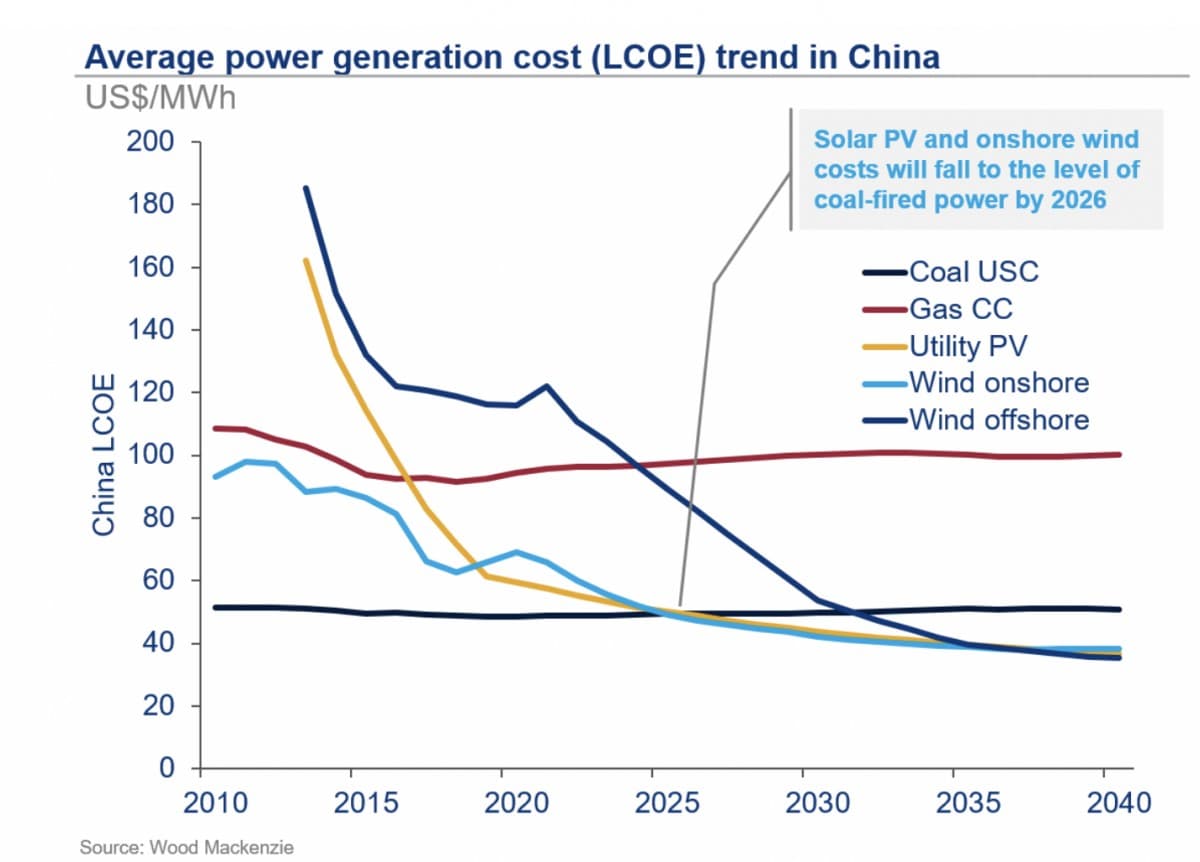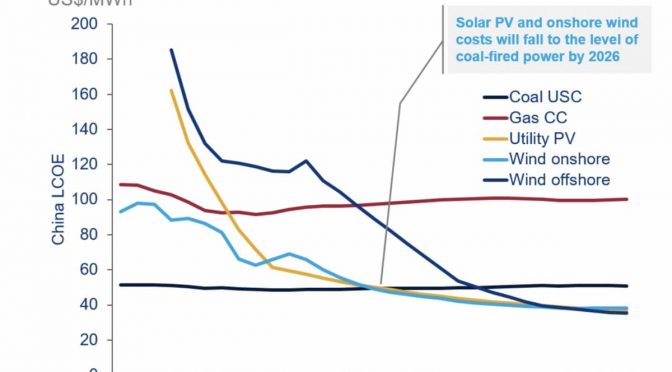In September of last year Oilprice reported an incredible milestone for renewable energy when solar and wind power became cheaper than coal in most of the world. Now, a new report released this week by Wood Mackenzie Power and Renewables has heralded another milestone: China will soon be added to that list of countries in which coal is no longer more economical than renewable energy.
This is a massive and massively important development because of the jaw-dropping scale at which China produces and burns coal. Alone, they consume as much coal as the rest of the world combined, and any claims that China has transitioned to “clean coal” should be taken with a hefty grain of salt. While the fact that coal is being priced out in much of the world marks great progress for the fight against climate change, especially at a moment that the UN is reminding the world with urgency that renewables are the path forward, true progress simply isn’t possible without China on board. And now it seems the winds of change have reached Beijing.
The Wood Mackenzie report, titled China provincial renewables competitiveness report 2019, reveals that the average levelized cost of electricity (LOCE) of solar and wind power in China is already cheaper than that of natural gas-fired power and will also overtake coal by just 2026. Wood Mackenzie Power and Renewables research director Alex Whitworth was quoted: “Across most of China’s provinces and regions, renewables cost premium remains over coal power, averaging 26 percent in 2019 for wind and solar, down from over 100 percent in 2010. Twenty-eight of 30 regions examined in our latest report see premiums of up to 70 percent, and only Shanghai and Qinghai have cost-competitive renewables today.”

While China is making great progress toward renewable energy’s economic viability on the whole, some provinces will take a lot longer than other to wean themselves off coal, reports Power Engineering International. “Renewables competitiveness is achievable in the next few years for some of China’s regions, but for others, the journey will not be a sprint but a marathon – taking a decade or more,” they write. Wood Mackenzie’s Whitworth also commented that “wealthier demand centres on the coast and in parts of central and northeast China will be first to see competitive renewables costs. But renewables investment in some areas of northern China, such as Xinjiang, will not be competitive with coal-fired generation, even by 2040.” while progress will be uneven and the amount of renewable energy in China’s overall energy mix remains low, the projections are still hopeful.
The efficiency gains in Chinese solar and wind are occurring in the larger context that China is moving toward ending subsidies for new wind and solar projects starting next year. This doesn’t mean that Beijing is not supporting renewable energies and that the move toward cheaper green energy by 2026 will be derailed, however. In fact, it means just the opposite: the subsidies worked.
Much like in the United States and Western Europe, solar and wind have become economically viable without governmental support and have therefore outgrown their subsidy programs. Last year Bloomberg reported that “on sun-drenched fields across Spain and Italy, developers are building solar farms without subsidies or tax-breaks, betting they can profit without them. In China, the government plans to stop financially supporting new wind farms. And in the U.S., developers are signing shorter sales contracts, opting to depend on competitive markets for revenue once the agreements expire.”
The Bloomberg article, published last September, highlights the huge importance of these green energy milestones, pointing out that this new era of economic self-sufficiency in wind and solar energy has “profound implications for the push to phase out fossil fuels and slow the onset of climate change” and that “electricity generation and heating account for 25 percent of global greenhouse gases. As wind and solar demonstrate they can compete on their own against coal- and natural gas-fired plants, the economic and political arguments in favor of carbon-free power become harder and harder to refute.”
By Haley Zaremba for Oilprice.com


